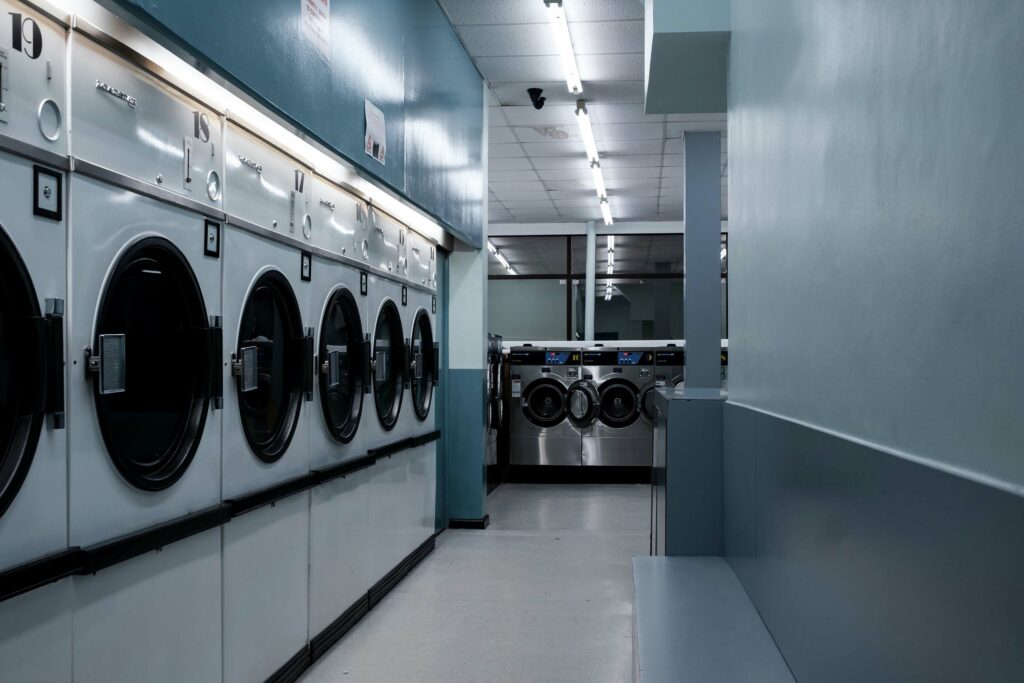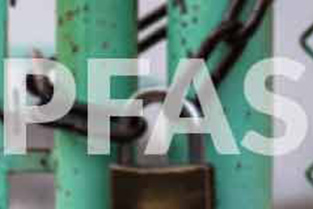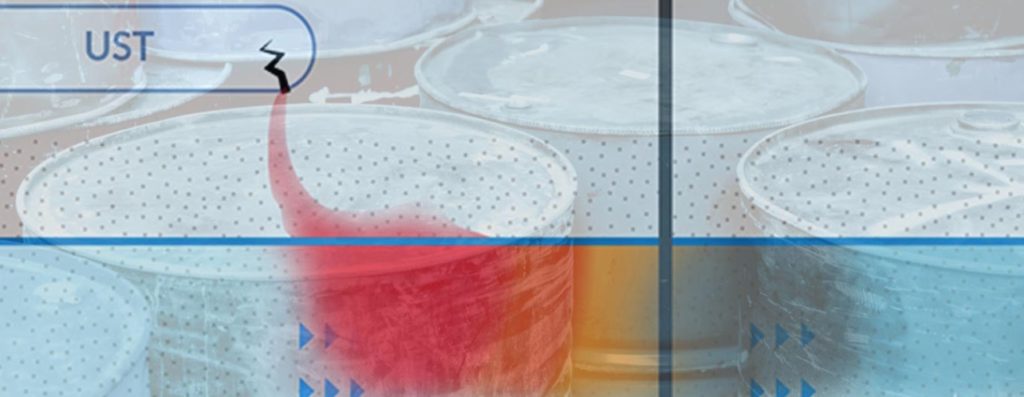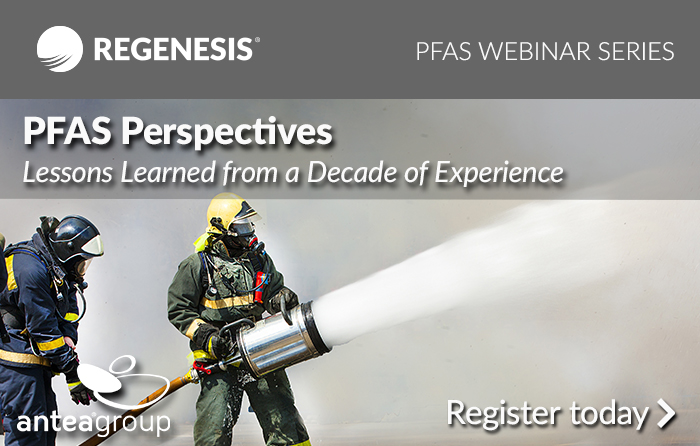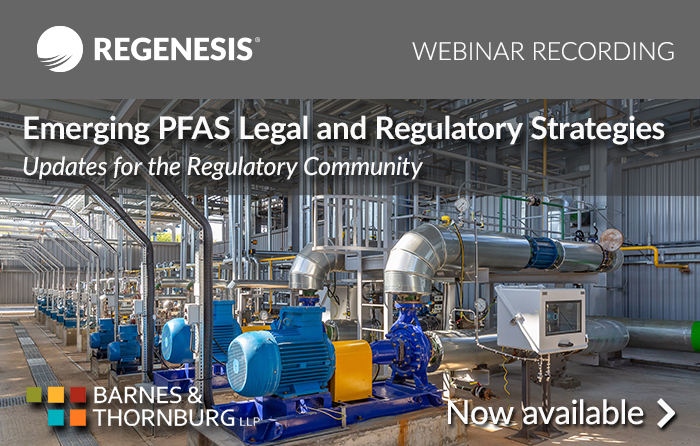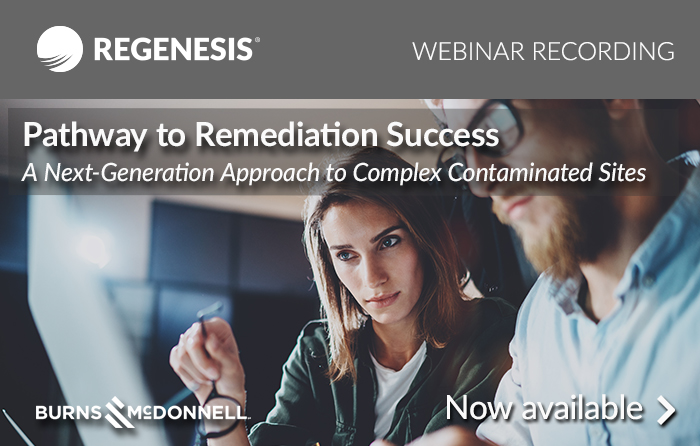In situ sanering van grondwater verontreinigd met PFAS – Internationale case studies
Oorspronkelijke uitzenddatum: 16 Juni 2020 | Taal: Nederlands | Kosten: Gratis
In deze webinar bespreekt Kris Maerten verscheidene case studies waarbij PlumeStop®, vloeibare (colloïdale) actieve kool, is gebruikt om grondwater verontreinigd met poly- en perfluoralkylstoffen (PFAS) succesvol in situ te saneren.
PFAS-verbindingen, waaronder PFOS en PFOA, zijn wijdverbreid in het milieu. Ze zijn persistent, toxisch, mobiel en bioaccumulerend; zozeer zelfs dat ze in verschillende landen zijn gereguleerd met grenswaarden voor het grondwater van minder dan 50 ng/L.
Momenteel wordt voor dit soort verontreiniging vaak een beheersmaatregel uitgevoerd door middel van Pump & Treat. Deze gebruiken veel energie en moeten doorgaans decennialang actief blijven. Bovendien is de verwerking van de gebruikte actieve kool moeilijk en duur.
De in situ behandeling van het grondwater door middel van injectie met PlumeStop is een bewezen alternatief voor P&T. Deze oplossing beheerst op een passieve en duurzame manier het risico dat gepaard gaat met de PFAS-verbindingen in grondwater. Door de behandeling wordt de bodem als het ware ‘gecoat’ met een dun laagje colloïdale, actieve kool. Hierdoor onstaat een soort ondergrondse actieve koolfilter die snel de PFAS-verbindingen sorbeert. De doeltreffendheid van de behandeling is geïllustreerd door de presentatie van een vijftal pilootproeven en full-scale toepassingen: 2 in de VS, 1 in Canada, 1 in het Midden-Oosten en 1 in Zweden.
Bekijk de webinar opname door het formulier op deze pagina in te vullen (on-demand webinar). Persoonlijke aanwezigheidscertificaten / attesten worden verstrekt op verzoek. In Belgiê erkent OVAM deze webinar als 1 uur training (artikel 53/3§1, 9° van het VLAREL).
Over de spreker:
 Kris Maerten
Kris Maerten
Technical Manager, Europe | REGENESIS
Als Technical Manager heeft Kris de leiding over een team van ervaren milieukundig ingenieurs die instaan voor alle saneringsontwerpen met de producten van REGENESIS in Europe. Hij heeft zelf meer dan 2000 saneringsontwerpen gemaakt en is betrokken geweest in saneringswerken in een vijftiental landen in Europa en ook internationaal, zowel op het vlak van ontwerp en uitvoering, als evaluatie van de resultaten. Kris is ook District Manager voor de Benelux waar hij naast technisch verantwoordelijke ook commercieel verantwoordelijke is.
REGENESIS is een internationaal bedrijf dat gespecialiseerd is in producten voor in situ bodemsaneringen. We hebben meer dan 25 jaar ervaring in de ontwikkeling en wereldwijde toepassing van producten die in de bodem kunnen geïnjecteerd worden voor de sanering van grondwaterverontreiniging.
Bekijk de Webinar
Tratamientos in situ de aguas subterráneas afectadas por solventes clorados
Presentado por: Ing. Marcello Carboni (Regional Manager Europe)
Ing. Marcello Carboni presenta varias tecnologías de remediación in situ mediante la aplicación de sustratos inyectables para el tratamiento de acuíferos contaminados por solventes clorados. Durante el seminario web, se describen en detalle 3 opciones de tratamiento diferentes, pasando de sustratos orgánicos ingenierizados para optimizar el perfil de liberación y su distribución en el subsuelo, al uso de productos coloidales de última generación:
- Decloración reductiva mejorada con el uso de sustratos orgánicos electro-donadores con liberación controlada de hidrógeno
- Biodegradación mejorada por adsorción in situ, utilizando carbón activado coloidal
- Reducción química in situ (ISCR) con hierro cero-valente coloidal sulfurado
Al final del seminario web hay una sesión de preguntas y respuestas donde se contesta a varias preguntas.
En este webinar tienes la oportunidad de aprender:
- Los principios técnicos subyacentes a las tres tecnologías in situ
- Los criterios de selección de las tecnologías basados en las características del sitio en términos de contaminación, geología, tiempos de tratamiento y concentraciones objetivo
- Algunos casos de estudio de aplicaciones reales que ilustran los resultados alcanzables con ejemplos prácticos
- La posibilidad de integrar las diversas tecnologías a través de fases siguientes o con aplicación conjunta
La presentación se estructura en torno a los 4 requisitos básicos que hacen exitosa cada tecnología in situ:
- Reactividad: mecanismos de reacción de los productos con los contaminantes de interés.
- Distribución: dispersibilidad, inyectabilidad y rayos de influencia obtenibles
- Persistencia: longevidad extrema de liberación/tratamiento, para poder dimensionar las intervenciones a través de aplicaciones individuales y minimizar los costos de remediación
- Facilidad de uso: uso de equipos de mezcla e inyección fáciles de implementar y seguros para los técnicos de campo
Presentado por:
 Ing. Marcello Carboni
Ing. Marcello Carboni
Regional Manager Europe, REGENESIS
Ing. Carboni, en REGENESIS desde 2011, ha sido Gerente del Distrito Mediterráneo hasta 2018, proporcionando suporte técnico y asistencia para Italia, España y otros países del sur de Europa en las aplicaciones de los productos de REGENESIS disponibles en el mercado. En su función actual como Gerente Regional de Europa, coordina los diversos distritos europeos desde un punto de vista técnico y comercial, y evalúa el potencial de desarrollo en nuevos países. Anteriormente había adquirido diez años de experiencia en diseño y realización de trabajos de remediación de sitios contaminados en una empresa italiana de consultoría y contratación. Marcello Carboni se graduó en 2001 al Politécnico de Turín en Ingeniería para el Medio Ambiente y el Territorio, después de haber seguido parte de sus estudios académicos en la Technische Universiteit Delft (TUDelft) en los Países Bajos y haber participado en la Universitat Politècnica de Catalunya (UPC) en Barcelona al desarrollo de un proyecto interuniversitario financiado por la Comunidad Europea en relación con el estudio del transporte en zona vadosa de contaminantes derivados de la reutilización de aguas residuales civiles tratadas.
Complete el siguiente formulario para ver el seminrio web:
Traitement in-situ d’aquifères impactés par des PFAS – Cas d’études à travers le monde
Première diffusion: 23 Avril 2020
Langue: Français
Dans ce webinaire, Aurélien Triger, Représentant Technique France, a discuté de plusieurs études de cas de traitement in situ de PFAS durant lesquels PlumeStop® Charbon Actif Liquide TM a été utilisé pour traiter avec succès des contaminants poly et perfluoroalkyles (PFAS) dans les eaux souterraines.
Les composés PFAS, y compris le PFOS et le PFOA, sont répandus dans l’environnement, récalcitrants et bio-accumulatifs, à tel point que dans plusieurs pays ils ont été réglementés avec des valeurs limites pour les eaux souterraines inférieures à 50 ng / L. Traditionnellement, les aquifères impactés sont gérés avec des systèmes Pump & Treat (P&T) à haute intensité énergétique, qui nécessitent un fonctionnement actif pendant des décennies et avec des problèmes importants pour l’élimination des résidus de traitement.
L’injection in situ de charbon actif colloïdal PlumeStop est une alternative éprouvée au P&T. Cette solution gère de manière passive et durable le risque associé aux composés PFAS dans les eaux souterraines. Lors de l’injection, PlumeStop recouvre la matrice solide de l’aquifère de charbon actif colloïdal. De cette façon, une zone d’adsorption in situ perméable est créée dans le sous-sol. Elle élimine rapidement les contaminants PFAS présents dans la phase mobile dissoute.
L’efficacité du traitement sera illustrée au cours du webinaire à travers la présentation de tests pilotes et de projets à grande échelle à travers le monde entier, dans lesquels des applications individuelles de PlumeStop ont conduit à une diminution des concentrations dans les eaux souterraines en dessous des limites de détection.
La présentation comprend des données de:
- Données d’un projet de réhabilitation sur un grand site Superfund (US)
- Test pilote sur un site militaire (États-Unis)
- Réhabilitation à grande échelle dans un ancien site industriel (Canada)
- Traitement à grande échelle dans une installation de stockage en vrac (Moyen-Orient)
- Projets récents et en cours (Europe)
Inscrivez-vous maintenant en remplissant le formulaire sur cette page.
L’AFITE a récemment publié un article dans son magazine sur le développement de PlumeStop comme solution de remédiation in situ pour traiter les PFAS, basé sur la présentation donnée par Aurélien Triger et Kris Maerten à la Réunion de sa Commission «Site et Sols Pollués ”à Paris le 11 octobre 2019. Vous pouvez lire cet article ici.
Intervenants:
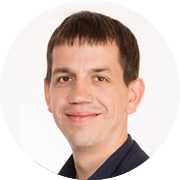
Aurélien Triger
Représentant Technique France

Kris Maerten
District Manager
Regarder l’enregistrement du webinaire
Trattamento di elevate concentrazioni di idrocarburi: casi di studio di adsorbimento in situ
Presentato da: Ing. Marcello Carboni (Regional Manager Europe), Ing. Mariangela Donati (Mediterranean District Manager)
In questo webinar in diretta l’ing. Mariangela Donati e l’ing. Marcello Carboni illustrano i fondamenti teorici e gli aspetti operativi dell’utilizzo di carbone attivo liquido alla micro-scala per trattare contaminazioni derivanti da perdite di idrocarburi, spill di oli e plume storici.
PetroFix® è una sospensione acquosa di carbone attivo colloidale di dimensioni 1-2 µm e accettori di elettroni biostimolanti. Il trattamento consente di combinare l’adsorbimento in situ con la biodegradazione sintrofica di tipo anaerobico. Ciò consente di gestire efficacemente concentrazioni elevate di idrocarburi, fornendo un trattamento immediato e risultati di bonifica duraturi.
Questo webinar affronta i seguenti argomenti:
- Descrizione dettagliata del processo di bonifica
- Rapido adsorbimento degli idrocarburi petroliferi
- Biodegradazione anaerobica potenziata
- Scenari di applicazione utilizzabili
- Iniezione direct push
- Iniezione attraverso pozzi
- Applicazione in scavo
- Approcci preventivi
- Discussione di diversi casi di studio
- Informazioni acquisite dall’esperienza sul campo
Si ritiene che questo webinar sia di estremo interesse per chi opera professionalmente nella progettazione e nell’esecuzione di interventi di bonifica di siti contaminati da idrocarburi, per le società che intervengono in emergenza a seguito di eventi accidentali, per gli Enti di controllo e per chi possiede o detiene siti oggetto di bonifica.
Presentato da:
 Ing. Marcello Carboni
Ing. Marcello Carboni
Regional Manager Europe, REGENESIS
L’ing. Carboni, in REGENESIS dal 2011, ha ricoperto fino al 2018 il ruolo di Mediterranean District Manager, fornendo per l’Italia e altri paesi nel Sud dell’Europa supporto tecnico e assistenza nelle applicazioni in campo dei prodotti Regenesis presenti sul mercato. Nel suo ruolo attuale di Regional Manager coordina dal punto di vista tecnico e commerciale i diversi distretti europei, e valuta potenzialità di sviluppo in nuovi paesi. Precedentemente aveva maturato un’esperienza decennale nella progettazione e nella realizzazione di bonifiche di siti contaminati all’interno di una società italiana di consulenza e di realizzazione interventi. L’ing. Carboni ha conseguito nel 2001 la laurea in Ingegneria per l’Ambiente e il Territorio presso il Politecnico di Torino, avendo seguito parte degli studi accademici presso la Technische Universiteit Delft (TUDelft) nei Paesi Bassi, ed avendo partecipato presso la Universitat Politècnica de Catalunya (UPC) di Barcellona allo sviluppo di un progetto inter-universitario finanziato dalla Comunità Europea relativo allo studio del trasporto all’interno della zona vadosa dei contaminanti residui derivanti dal riutilizzo a fini irrigui di acque di scarico civili trattate.
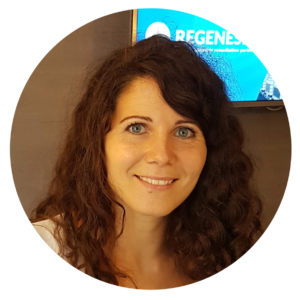 Ing. Mariangela Donati
Ing. Mariangela Donati
Mediterranean District Manager, REGENESIS
L’ing. Donati, District Manager di REGENESIS per l’Italia e altri paesi del Sud Europa, supporta i clienti nella selezione, nel dimensionamento e nella valutazione economica degli interventi di bonifica mediante le diverse tecnologie REGENESIS disponibili. L’Ing. Donati ha svolto i suoi studi all’Università di Bologna, dove ha conseguito nel 2014 una laurea magistrale in Ingegneria per l’Ambiente e il Territorio, avendo partecipato allo sviluppo di uno studio in ambito di statistica e geostatistica applicate alle concentrazioni di nitrati in acque superficiali presso l’École des Mines de Paris (Francia). Ha maturato successivamente esperienze lavorative pluriennali sia in Italia che all’estero nei settori ambientale, minerario, di geostatistica e di gestione dei siti contaminati nelle diverse fasi previste dagli iter procedurali.
Guarda la registrazione webinar:
Optimization of ZVI Technology for the In Situ Remediation of Chlorinated Contaminants
Our guest speaker in this webinar is the esteemed Dr. John Freim, ZVI Product Manager and Director of Materials Science at REGENESIS. Dr. Freim discusses the benefits of using zero valent iron (ZVI) as a powerful remediation amendment.
ZVI can be used for the remediation of chlorinated hydrocarbons, pesticides, and other toxic substances in the soil and groundwater. Since the launch of S-MicroZVI™ in 2018, over 100 sites worldwide have been treated with this advanced In Situ Chemical Reductive (ISCR) technology.
In this webinar you will learn:
- The concepts of how ZVI technologies work: in situ chemical reduction
- The benefits of sulfidated, colloidal ZVI − supported by the latest research
- The differences between S-MicroZVI and other products in the marketplace
- What to expect when combining technologies:
– PlumeStop and ZVI
– ZVI-assisted bioremediation
The presentation is structured around the 4 amendment requirements for successful in situ remediation:
- Reactivity – Reaction mechanisms of S-MicroZVI versus bare ZVI
- Distribution – Buoyancy, mixing and injection behaviour of colloidal ZVI suspensions compared to large particle size ZVI
- Persistence of S-MicroZVI and minimising passivation
- Ease of Use – Mixing and injection protocols
Dr. Freim is joined by Gareth Leonard, Managing Director of REGENESIS in Europe.
About the presenters:
 Dr John Freim
Dr John Freim
ZVI Product Manager and Director of Material Science | REGENESIS
Dr. Freim has a background in the processing and synthesis of engineered materials, including metal and ceramic nanopowders. With over 30 years of expertise in materials processing, and 15 years in the environmental remediation industry, Dr. Freim joined REGENESIS in 2018. Throughout his career, Dr. Freim has published and presented at many leading conferences and symposia. He has been awarded numerous grants through the EPA, NIH, DOE, NSF, USAF, and US Missile Defense Agency. With this, and his successful entrepreneurial environmental remediation experience, he brings a distinguished track record to his role as Director of Materials Science at REGENESIS and is a strong complement to REGENESIS’ existing R&D team.
 Gareth Leonard
Gareth Leonard
Managing Director, Europe | REGENESIS
Gareth is the Managing Director of REGENESIS in Europe. He leads a dedicated team of in situ remediation specialists to provide solutions for the contaminated land industry. Gareth has over 18 years contaminated land experience, having provided successful remediation designs and implementation for over a thousand projects across Europe, the Middle East and Africa.
Watch this free webinar
PFAS Perspectives: Lessons Learned from a Decade of Experience
In this live US webinar, we are pleased to have guest speakers Jack Sheldon, Senior Remediation Specialist at Antea Group, and Caron Koll, PG, LSP, and PFAS Lead at Antea Group. Their presentation discusses best practices from their experience working with PFAS contaminants in groundwater. Through more than a decade of developing sampling programs and interpreting PFAS analytical data, many lessons have been learned and this webinar focuses on a few of those lessons.
Highlights of this free webinar:
- How to create a custom sampling program, demonstrated by a case study of an environmental site
- A method you can use to sort the chaos out of your data
- How to determine whether a product contains PFAS by looking at a Safety Data Sheet (SDS)
About the presenters:
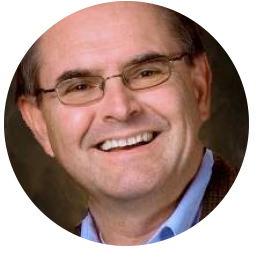 Jack Sheldon
Jack Sheldon
Senior Remediation Specialist | Antea® Group
Jack Sheldon is a remediation expert with over 35 years of industry experience. He has specialized in the field application of various types of bioremediation and chemical oxidation/reduction systems, with personal involvement in 22 first-type remediation projects in their respective states. He has completed remediation projects in all 50 states and several locations abroad. Mr. Sheldon has worked extensively in the field to determine chemical type and extent, prepared various environmental reports, and successfully managed numerous environmental projects and technology programs. His primary expertise has been in the identification and selection of remediation technologies for projects and the monitoring of those technologies. Through this process, Mr. Sheldon has designed, implemented, and supervised hundreds of treatability and pilot studies comparing technologies and determining their feasibility under simulated or actual site conditions.
 Caron Koll, PG, LSP
Caron Koll, PG, LSP
PFAS Lead | Antea® Group
Over the span of 34 years, Caron Koll has developed focused environmental response actions and managed hundreds of environmental investigations and remedial projects in the Northeast and Midwest United States and South America. During that period, Caron met or exceeded client expectations to develop an enviable reputation within the industry. Caron attributes her success to understanding client needs, an in-depth knowledge of applicable environmental laws and regulations, and an aptitude for identifying creative and cost saving solutions. Caron has experience serving a wide spectrum of industrial clients including: chemical manufacturing, oil and gas, energy, automotive, transportation, and general manufacturing. Contingent on client needs and regulatory drivers, she is an account leader and manages, directs, and oversees the development and implementation of environmental remedial investigations including conceptual site models, feasibility studies, permitting, remedy design, remedy implementation, and remedy operations through to post closure. With a focus on client’s needs and expectations, Caron has been responsible for advising clients of appropriate and compliant response actions and the path forward to achieve client end state goals. Foremost, as a project and account manager, Caron is responsible for collaborating with clients on forecasting future needs based on global business economic dynamics and relevant regulatory mandates. She is responsible for managing, overseeing, directing, and mentoring, as well as contracting and managing/controlling budgets.
Watch the webinar recording
Ottimizzazione della tecnologia ZVI per il trattamento in situ di solventi clorurati
Presentato da: Ing. Marcello Carboni (Regional Manager Europe), Ing. Mariangela Donati (Mediterranean District Manager)
L’ing. Marcello Carboni e l’ing. Mariangela Donati illustrano i vantaggi dell’utilizzo della solfurazione di una sospensione colloidale a base di ferro zero-valente (ZVI) come potente reagente per la bonifica in situ di solventi clorurati, pesticidi e altri contaminanti nei terreni e nelle acque di falda. Dall’introduzione del S-MicroZVI avvenuta nel 2018, oltre un centinaio di siti in tutto il mondo sono stati trattati con questa tecnologia avanzata di ISCR (In Situ Chemical Reduction). Al termine del webinar è presente una sessione Q&A (domande e risposte) in cui viene data risposta alle domande poste.
In questo webinar sul ZVI solfurato hai l’occasione di apprendere:
- I concetti di come funzionano le tecnologie ZVI attraverso la riduzione chimica abiotica
- I benefici della solfurazione e i suoi effetti su assorbimento, reattività e persistenza, supportati dalle nostre ricerche più recenti
- Nuovi studi di laboratorio sulla struttura e sul comportamento di S-MicroZVI
- Come applicare il prodotto e combinarlo con carbone attivo colloidale e declorurazione riduttiva potenziata.
La presentazione è strutturata attorno ai 4 requisiti fondamentali per un trattamento in situ di successo:
- Reattività – Meccanismi di reazione di S-MicroZVI ed effetto della solfurazione
- Distribuzione – Dispersibilità e iniettabilità del ZVI colloidale, con chiari confronti effettuati con altri prodotti ZVI
- Persistenza – L’effetto della solfurazione nel minimizzare la passivazione dovuta all’idrolisi e alla formazione di ossidi
- Facilità d’uso – Protocolli di miscelazione e iniezione di un reagente colloidale
Presentato da:
 Ing. Marcello Carboni
Ing. Marcello Carboni
Regional Manager Europe, REGENESIS
L’ing. Carboni, in REGENESIS dal 2011, ha ricoperto fino al 2018 il ruolo di Mediterranean District Manager, fornendo per l’Italia e altri paesi nel Sud dell’Europa supporto tecnico e assistenza nelle applicazioni in campo dei prodotti Regenesis presenti sul mercato. Nel suo ruolo attuale di Regional Manager coordina dal punto di vista tecnico e commerciale i diversi distretti europei, e valuta potenzialità di sviluppo in nuovi paesi. Precedentemente aveva maturato un’esperienza decennale nella progettazione e nella realizzazione di bonifiche di siti contaminati all’interno di una società italiana di consulenza e di realizzazione interventi. L’ing. Carboni ha conseguito nel 2001 la laurea in Ingegneria per l’Ambiente e il Territorio presso il Politecnico di Torino, avendo seguito parte degli studi accademici presso la Technische Universiteit Delft (TUDelft) nei Paesi Bassi, ed avendo partecipato presso la Universitat Politècnica de Catalunya (UPC) di Barcellona allo sviluppo di un progetto inter-universitario finanziato dalla Comunità Europea relativo allo studio del trasporto all’interno della zona vadosa dei contaminanti residui derivanti dal riutilizzo a fini irrigui di acque di scarico civili trattate.
 Ing. Mariangela Donati
Ing. Mariangela Donati
Mediterranean District Manager, REGENESIS
L’ing. Donati, District Manager di REGENESIS per l’Italia e altri paesi del Sud Europa, supporta i clienti nella selezione, nel dimensionamento e nella valutazione economica degli interventi di bonifica mediante le diverse tecnologie REGENESIS disponibili. L’Ing. Donati ha svolto i suoi studi all’Università di Bologna, dove ha conseguito nel 2014 una laurea magistrale in Ingegneria per l’Ambiente e il Territorio, avendo partecipato allo sviluppo di uno studio in ambito di statistica e geostatistica applicate alle concentrazioni di nitrati in acque superficiali presso l’École des Mines de Paris (Francia). Ha maturato successivamente esperienze lavorative pluriennali sia in Italia che all’estero nei settori ambientale, minerario, di geostatistica e di gestione dei siti contaminati nelle diverse fasi previste dagli iter procedurali.
Guarda la registrazione webinar:
Emerging PFAS Legal and Regulatory Strategies: Updates for the Regulatory Community
In this webinar we are pleased to have as a special guest speaker Charles M. Denton, Esq., partner at Barnes & Thornburg LLP and immediate past chair of the firm’s national Environmental Law Department. Charles Denton provides an overview of the emerging legal and regulatory considerations for PFAS contamination and key topics for the regulatory community, including businesses and local governments. He is joined by Chad Northington, Southeast District Technical Manager at REGENESIS, who will discuss low-cost, in situ remediation of PFAS using colloidal activated carbon.
Highlights of this free webinar:
- What are the likely sources of PFAS compounds?
- What are the PFAS exposure pathways of concern?
- How are PFAS compounds regulated, and what’s next?
View the recording of this free webinar
Pathway to Remediation Success: A Next-Generation Approach to Complex Contaminated Sites
In this webinar we are pleased to have as special guest speakers John Hesemann, Remediation Technical Practice Leader, and Rick Cramer, Environmental Sequence Stratigraphy Practice Leader of Burns & McDonnell. Their presentation discusses the next generation approach to tackling remediation of complex contaminated sites. They are joined by Craig Sandefur, Vice President of Technical Services at REGENESIS, who discusses Design Verification Testing (DVT) activities to improve performance results and reduce project costs at contaminated sites.
Highlights of this free webinar:
- Learn how a focus on Remediation Geology defines the “static” subsurface framework that is the primary control on subsurface fluid dynamics.
- And how this, combined with improved understanding of subsurface processes, results in a Process-Based CSM that informs all stages of the remediation life cycle.
- Case studies presented will show how this approach applies to all complex sites, regardless of location, contaminant, and subsurface conditions.
View the recording of this free webinar
About the Presenters
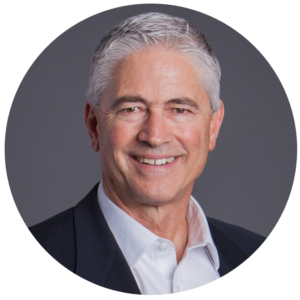 Rick Cramer, PG
Rick Cramer, PG
CA Remediation Department Manager, Burns & McDonnell
Rick Cramer is a California licensed Professional Geologist (PG) with over 30 years of environmental experience, and serves as the Remediation Department Manager and Environmental Sequence Stratigraphy Practice Lead with Burns & McDonnell out of their Brea, California office. Rick has a BS degree in geology from University of the Pacific and a MS degree in geology from University of California, Davis. He began his professional career in the petroleum industry, and pioneered the application of sequence stratigraphy to groundwater projects.
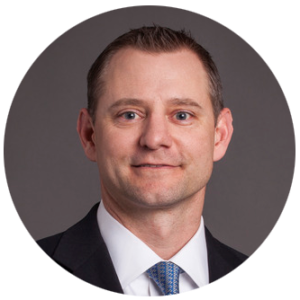 John Hesemann, PE
John Hesemann, PE
Remediation Technical Practice Leader, Burns & McDonnell
John is a Licensed Professional Engineer (PE) with over 21 years of environmental experience, and serves as Burns & McDonnell’s Remediation Technical Practice Leader for Environmental Division. John earned B.S. and M.S. degrees in Geological Engineering from the Missouri University of Science and Technology and is a licensed professional engineer in the states of Connecticut, Illinois, Kansas, Louisiana, Massachusetts, Missouri, and Oklahoma. He has personally led or supported over 100 remediation projects in 17 states, mostly for industrial clients managing risks associated with chlorinated solvents, petroleum compounds, and other recalcitrant contaminants. As Burns & McDonnell’s Remediation Technical Practice Leader, John leads groups of remediation professionals and practitioners dedicated to developing and implementing effective solutions for private and public sector clients.
 Craig Sandefur
Craig Sandefur
Vice President of Remedial Applications Development, REGENESIS
Craig Sandefur is the Vice President of Remedial Applications Development at REGENESIS and a recognized expert with over 20 years of experience in the areas of in situ remedial design and applications. In his current role at REGENESIS, Mr. Sandefur is part of team of geologists located throughout the United States that provide remediation designs and optimize performance for REGENESIS clients. Under his direction, the Technical Services team at REGENESIS developed a Design Verification Testing (DVT) program, which consists of a suite of field sampling and testing activities carried out prior to subsurface remedial reagent emplacement. The DVT program at REGENESIS has also pioneered the use of Passive Flux Meters (PFM) in conjunction with contaminant plume aspect ratio analysis. This program has directly informed REGENESIS design and application teams, resulting in significant improvements in remedial reagent emplacement, project remedial outcomes and project cost reductions.
Treating high levels of petroleum hydrocarbons: case studies of in situ sorption
First broadcast: 3rd December 2019
Speaker: Jack Shore, District Manager, UK & Scandinavia, REGENESIS
In this live webinar Jack Shore discusses the theory and practical use of micron-scale liquid activated carbon to remediate contamination from oil spills, leaks and historic plumes.
PetroFix® is a water-based suspension of 1-2µm activated carbon and biostimulating electron acceptors. The treatment combines in situ sorption with syntrophic biological degradation. This allows for high levels of petroleum hydrocarbons to be targeted, providing immediate treatment and long-lasting remediation results. This webinar covers:
- Detailed explanation of the remediation process
-Rapid sorption of the petroleum hydrocarbons
-Enhanced anaerobic oxidation - Practical application scenarios
-Direct push injection
-Injection through wells
-Excavation application
-Preventative approaches - Discussion of multiple case studies
- Lessons learned from field experience
This webinar is of interest to contaminated land practitioners and spill response professionals.
About the presenter:
 Jack Shore
Jack Shore
District Manager, UK & Scandinavia, REGENESIS
Jack is in charge of the UK and Scandinavian business district within REGENESIS. As part of this role, he manages a team providing technical support and design work to a mix of Design and Build Consultancies, Remediation Contractors and Blue-Chip Clients. Jack has over 10 years of experience within the remediation industry and most recently has successfully implemented the first injection of PlumeStop to effectively stabilise a PFAS plume in the EU. His experience ranges from supervising site investigations, developing in situ remediation designs, and managing large-scale remediation projects with multiple stakeholders.

 Americas
Americas Europe
Europe Français
Français Deutsch
Deutsch Italiano
Italiano Español
Español
